Post by Dave on Oct 12, 2009 20:30:14 GMT
A place that has been on our to do list for some time and the weather looked good when we got up this morning so we decided today was the day to go the Wells. Our journey up was fine until we got near Taunton, the southbound carriage was closed and sadly we saw what looked a very bad road crash.
Wells really looks no bigger than a very small town and it has some real treasures to find when you walk around some of the streets. It is famous for its Cathedral and it sure is a very impressive building.
As we were about to go in we saw a notice that stated it was £5.50 each, plus If I wanted to take pictures I had to buy a license that cost £3. £14 in total for what would be a walk around a very large church did seem a bit expensive, but we decided we would pay and go in. Only when you get to the desk you are not asked for any money, I only had to pay £3 for my license to take pictures.
You then enter a corridor and there you find a large tube where you can donate if you want too and yes it says on it they would like £5.50. most we saw just walked past it and put nothing in, but while we did not put the full £11 pound in, we put in a figure that was close to it.
Its really great inside and so big and if you do ever go there its worth waiting for the oldest working clock to do what it does, it’s a great show just on its own.The organ pipes are spectacular and there is so much to read everywhere inside.
But make sure you don’t miss a real gem, we were lucky to find it as we did not know anything about it. Come back outside and walk around the right hand side of the Cathedral, you go under a arch that cars go under and then a few short steps( they will be if you walk beside me) and under another arch into the most wonderful street I have ever seen.
The chimneys stand so high and each has a different crest on them, it was the icing on the cake on our day we went to Wells City
Wells is a small cathedral city and civil parish in the Mendip district of Somerset, England, on the southern edge of the Mendip Hills.
The name Wells derives from the three wells dedicated to Saint Andrew, one in the market place and two within the grounds of the Bishop's Palace and cathedral.During the Middle Ages these wells were thought to have curative powers. The Wells city arms show an ash tree surrounded by three wells, with the Latin motto Hoc fonte derivata copia (the fullness that springs from this well).
Although the population, recorded in the 2001 census, is only 10,406, it has had city status since 1205. This was confirmed and formalised by Queen Elizabeth II by letters patent issued under the Great Seal dated April 1, 1974. It is the second smallest city in England, following the City of London, though St Davids in Wales is the smallest city in the UK.
The City was a Roman settlement but only became an important centre under the Saxons when King Ine of Wessex founded a minster church in 704. Two hundred years later, this became the seat of the local Bishop; but by 1091, this had been removed to Bath. This caused severe arguments between the canons of Wells and the monks of Bath until the bishopric was renamed as the 'Diocese of Bath & Wells', to be elected by both religious houses. Wells became a borough some time before 1160 when Bishop Robert granted its first charter. Fairs were granted to the City before 1160.
Wells was listed in the Domesday Book of 1086 as Welle, from the Old English wiells, which was not listed as a town but included four manors with a population of 132 which implies a population of 500-600. Earlier names for the settlement have been identified which include Fontanetum in a charter of 725 granted by King Ina to Glastonbury, and Fontuculi. Tydeston has also been recorded although this may relate to a hill settlement to the south east of Wells. Tidesput or Tithesput furlang relates to the area east of the Bishops garden in 1245 An established market had been created in Wells by 1136, and it remained under episcopal control until its city charter from Elizabeth I in 1589.
English Civil War
During the English Civil War, Parliamentarian troops used the Cathedral to stable their horses and damaged much of the ornate sculpture by using it for firing practice. William Penn stayed in Wells shortly before leaving for America, spending a night at The Crown Inn. Here he was briefly arrested for addressing a large crowd in the market place, but released on the intervention of the Bishop of Bath & Wells.
Monmouth Rebellion and the Bloody Assizes
During the Monmouth Rebellion the rebel army attacked the Cathedral in an outburst against the Established Church and damaged the West front. Lead from the roof was used to make bullets, windows broken, the organ smashed and their horses stabled in the nave. Wells was the final location of the Bloody Assizes on September 23, 1685. In a makeshift court lasting only one day, over 500 men were tried and the majority sentenced to death.
Main Street

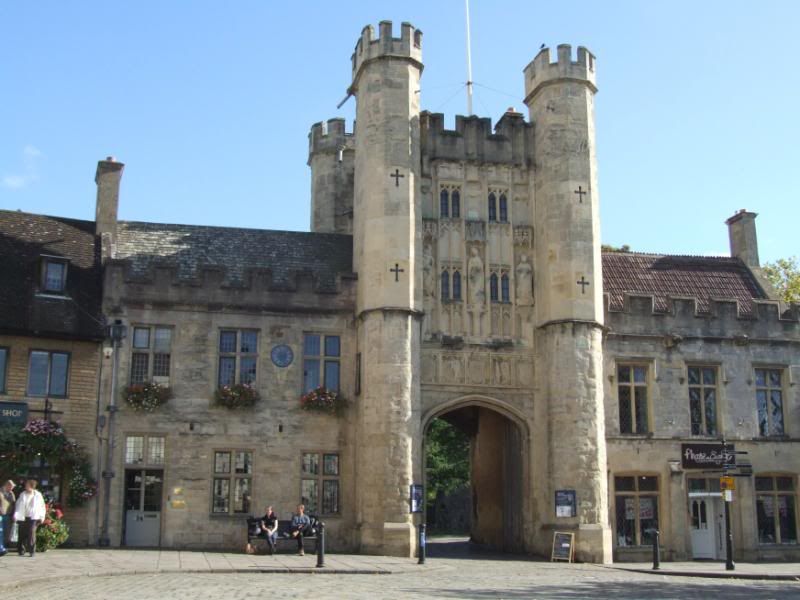
First archway to the Cathedral
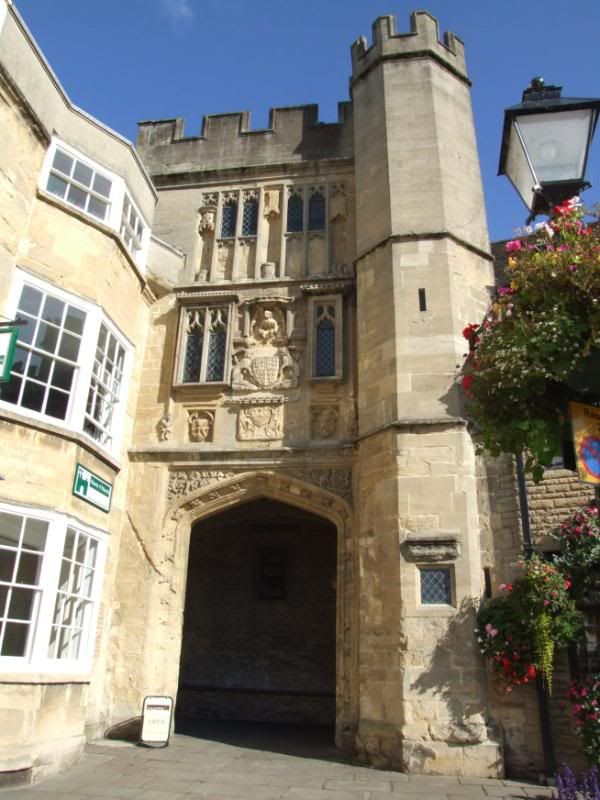
The front, this took 30 years to build and the rest took a lot longer
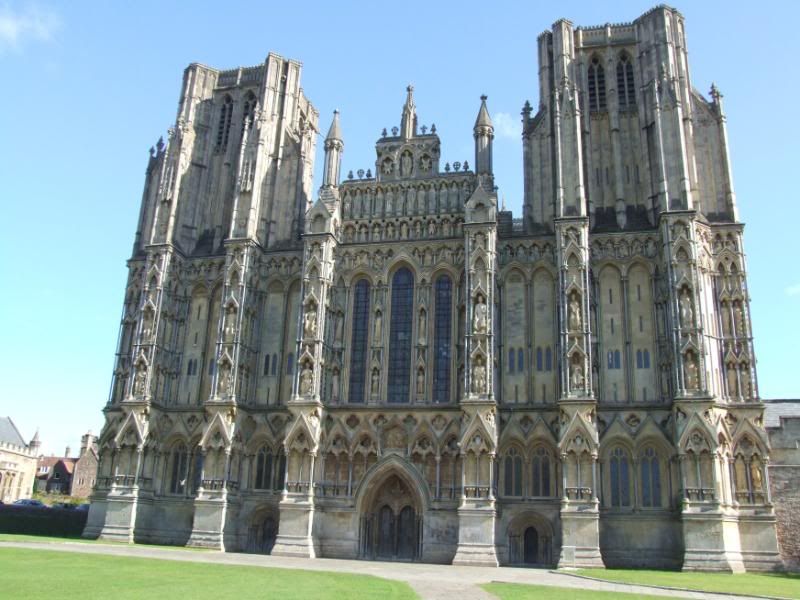
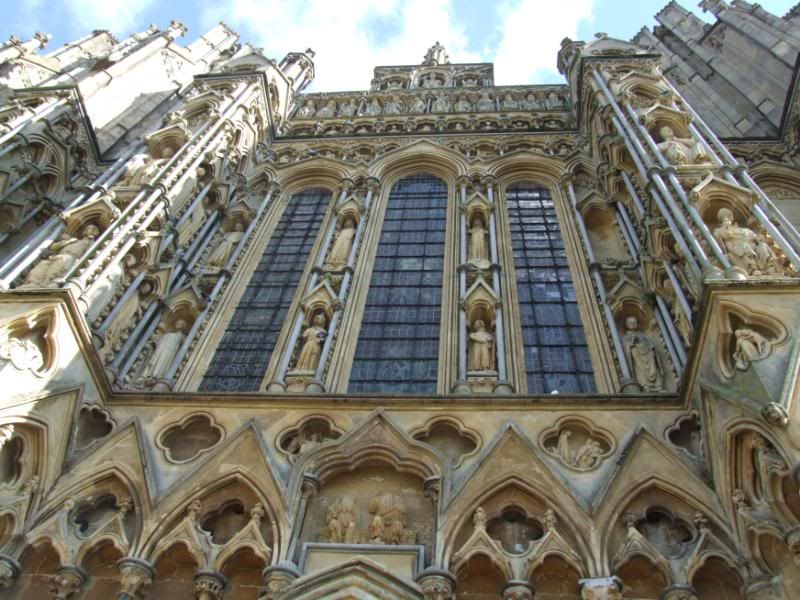
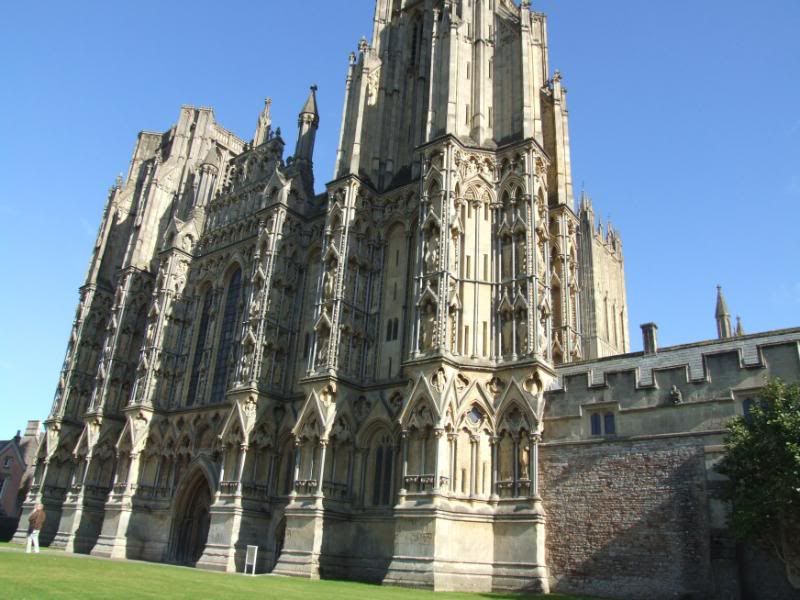
The corridor, you can see the tube for the money on the left.

Shots inside
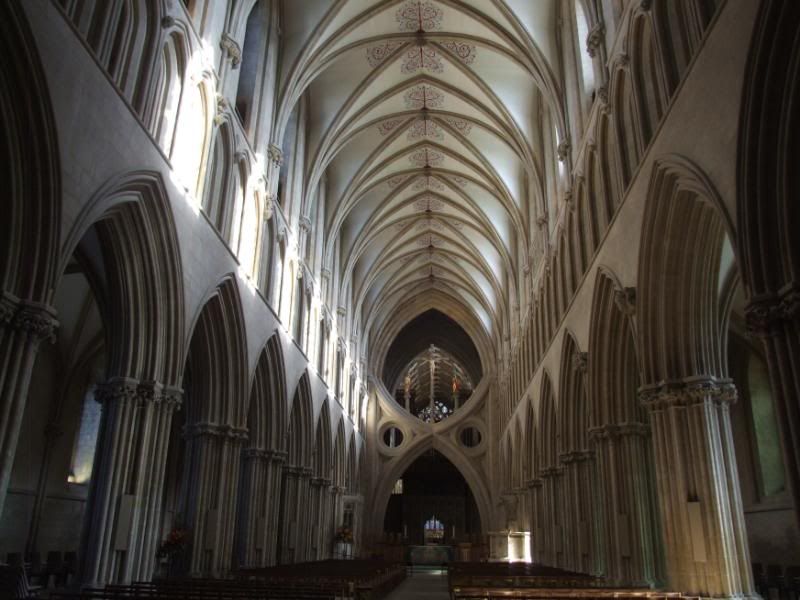

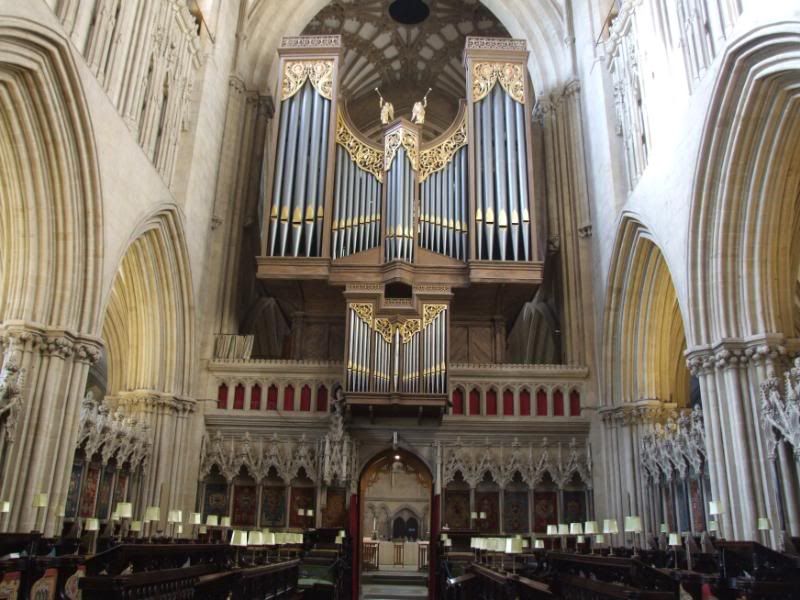
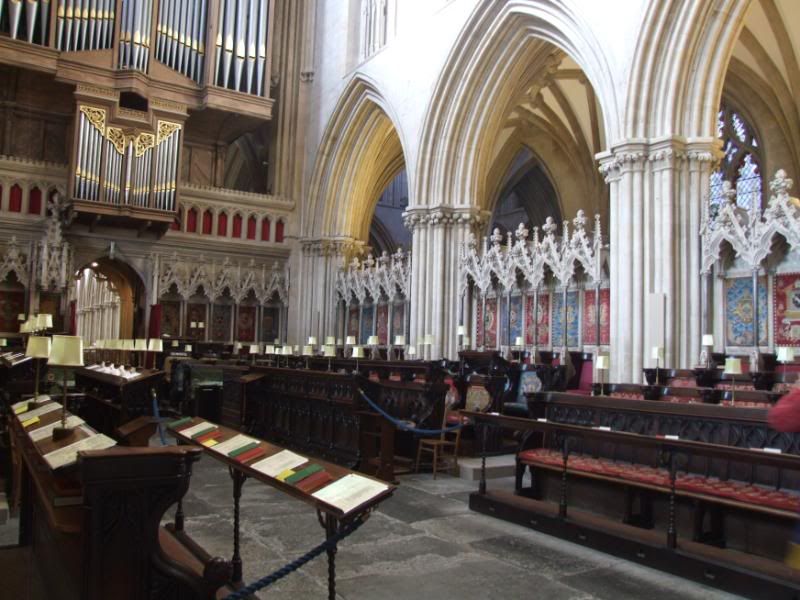
A strange place we found by going through a door in the main Cathedral

The Carol Shot
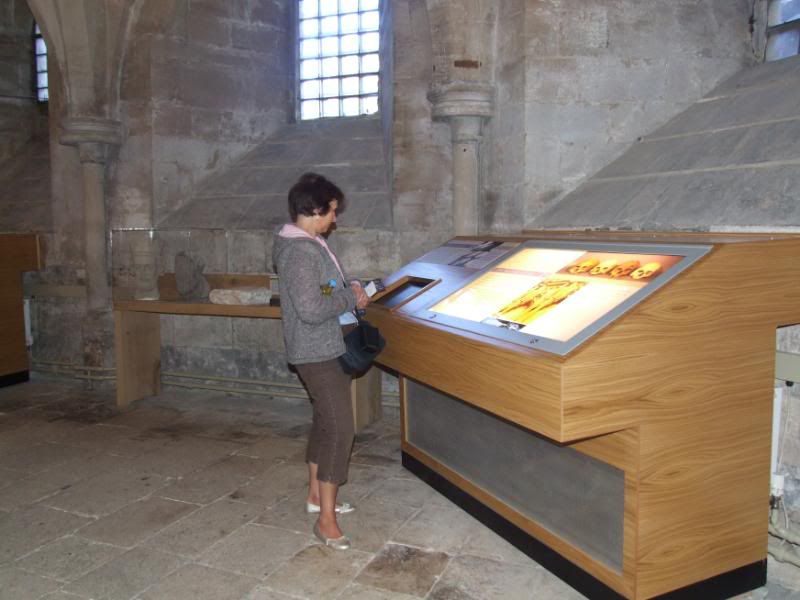
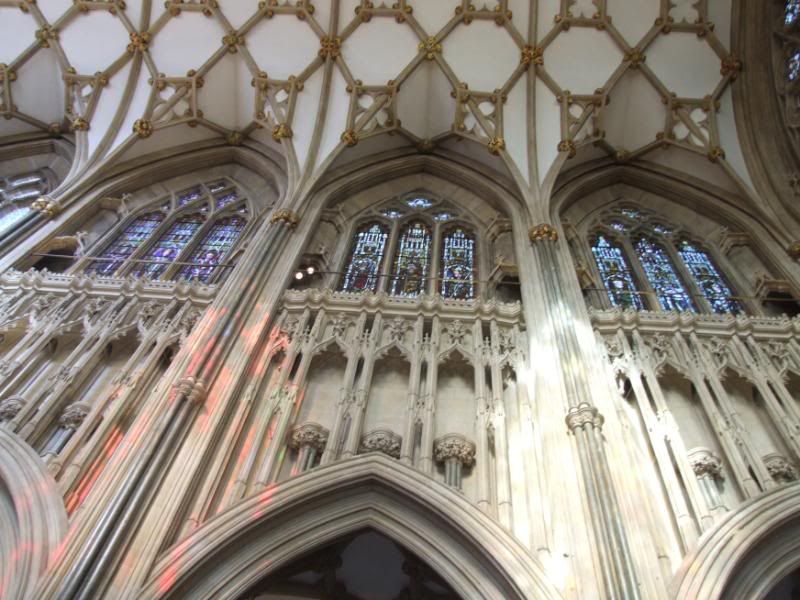

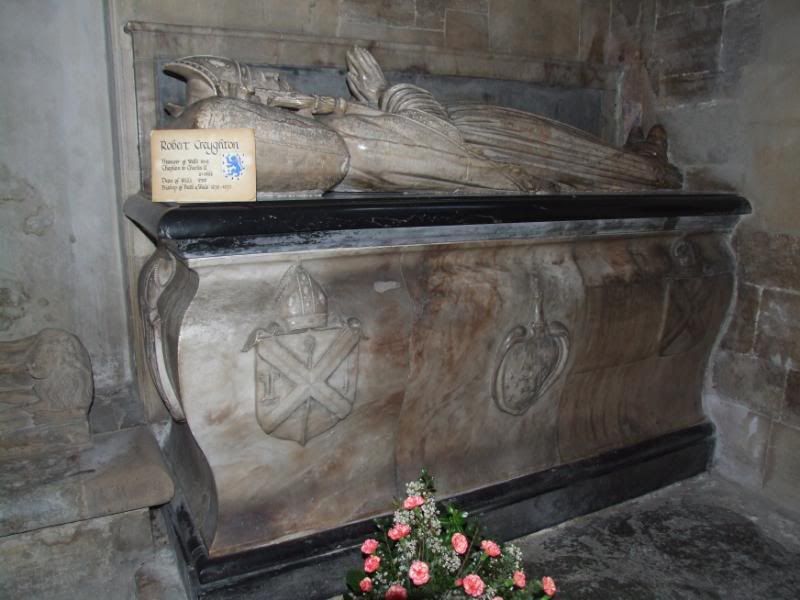
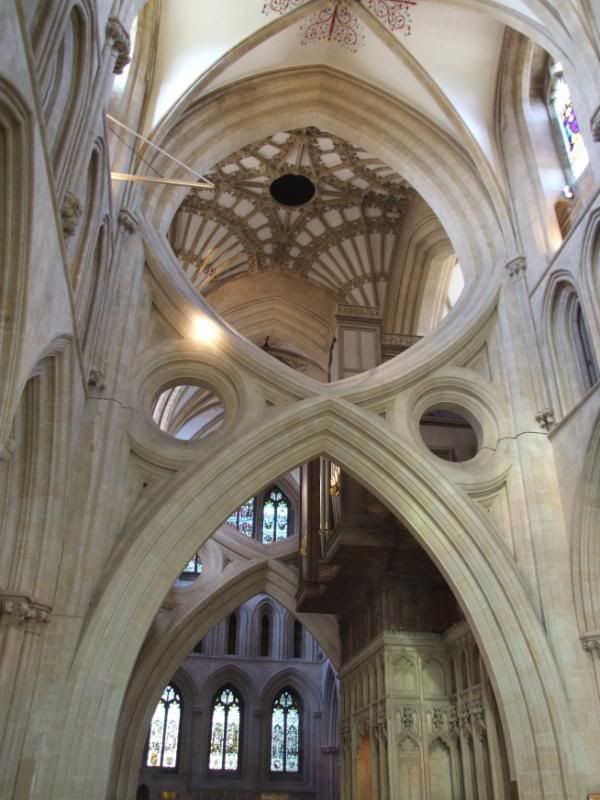
Stairs to a special meeting room
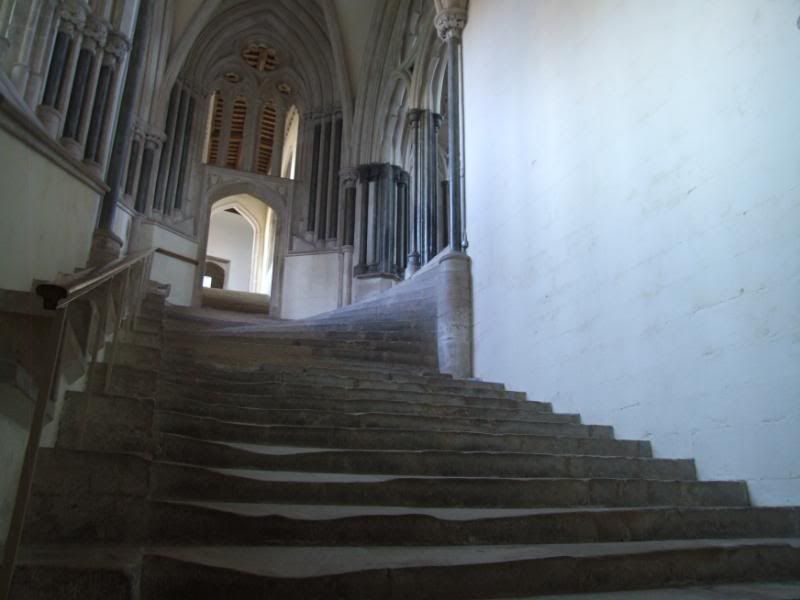
The meeting room
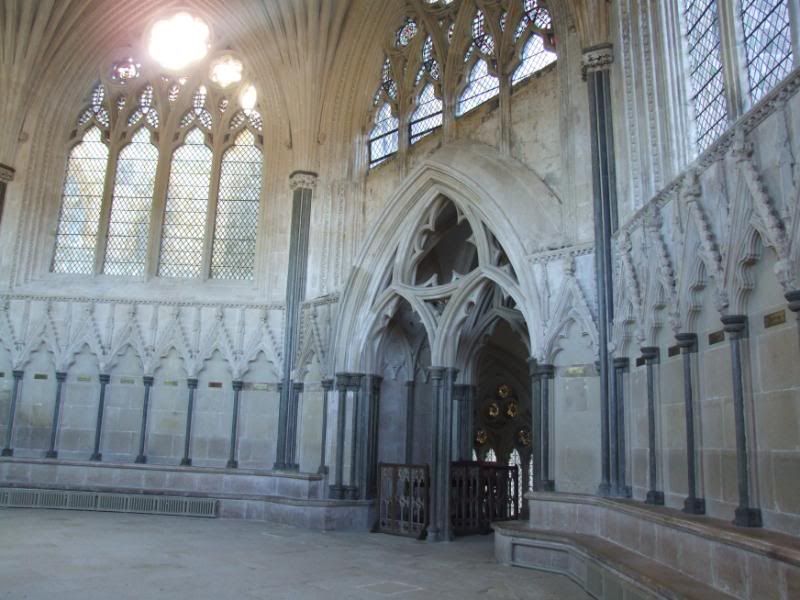
Looking back down the stairs
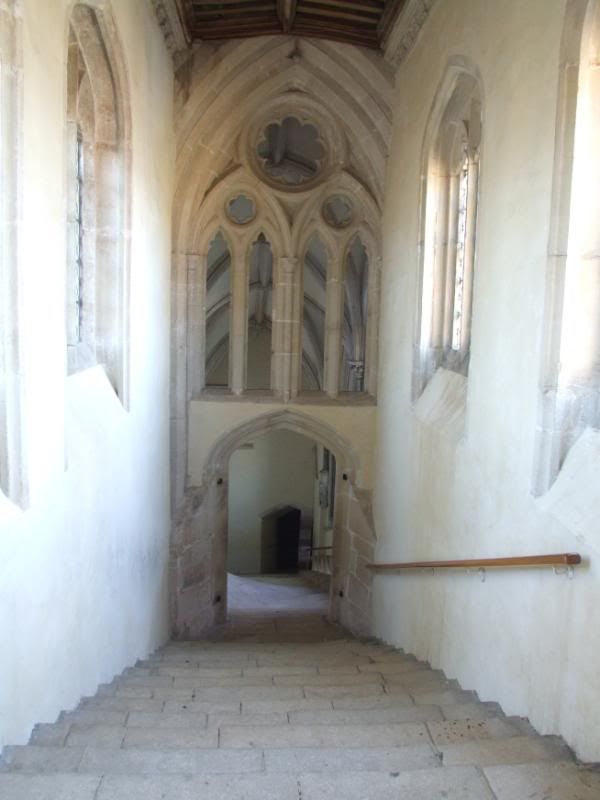
The right hand side
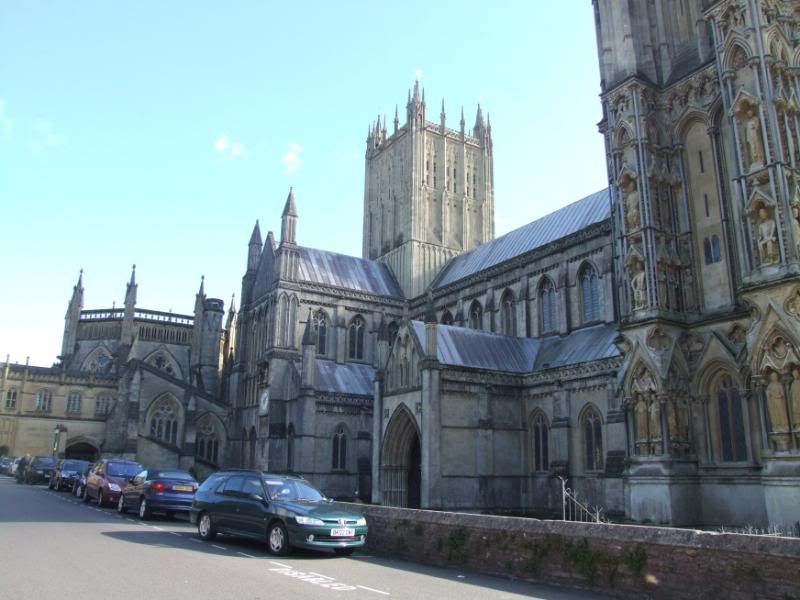
The archway
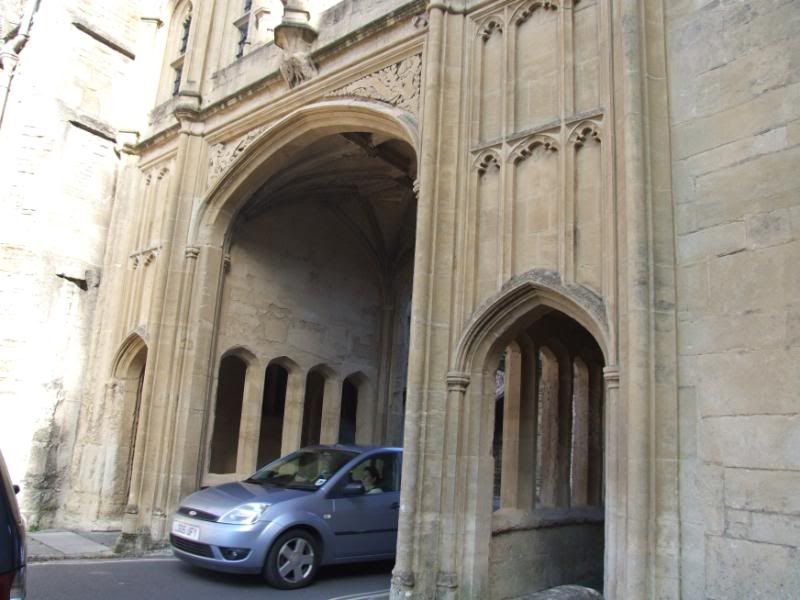
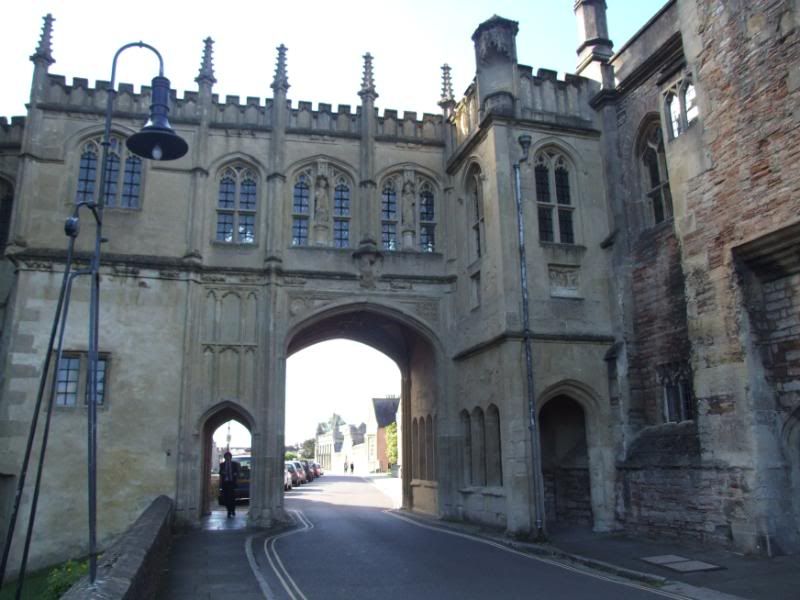
The wonderful Street
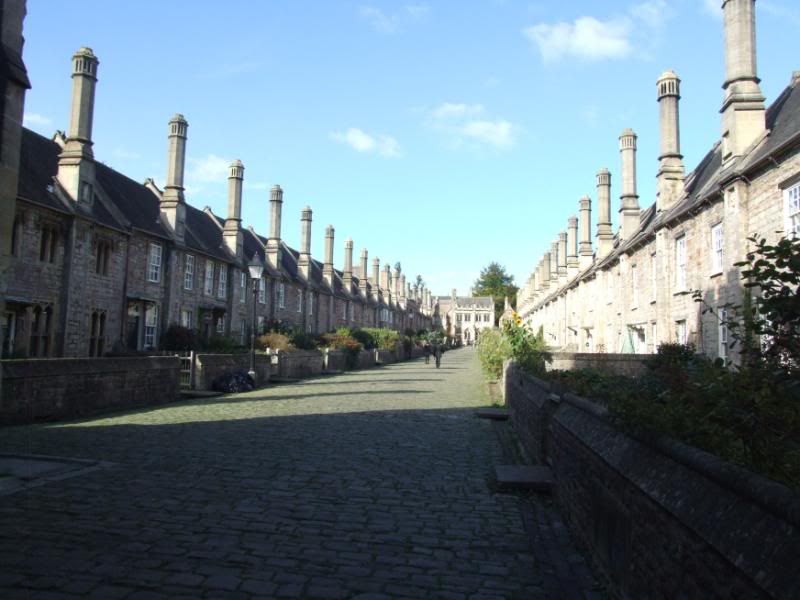
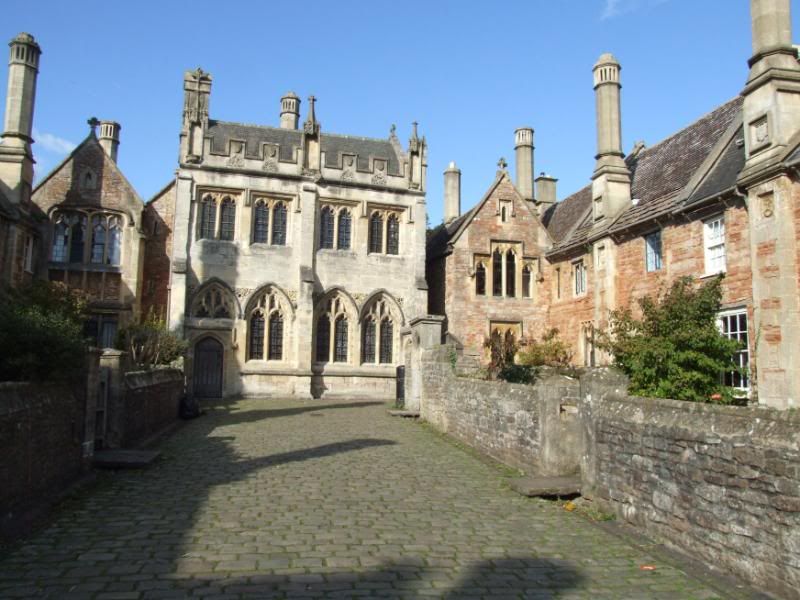
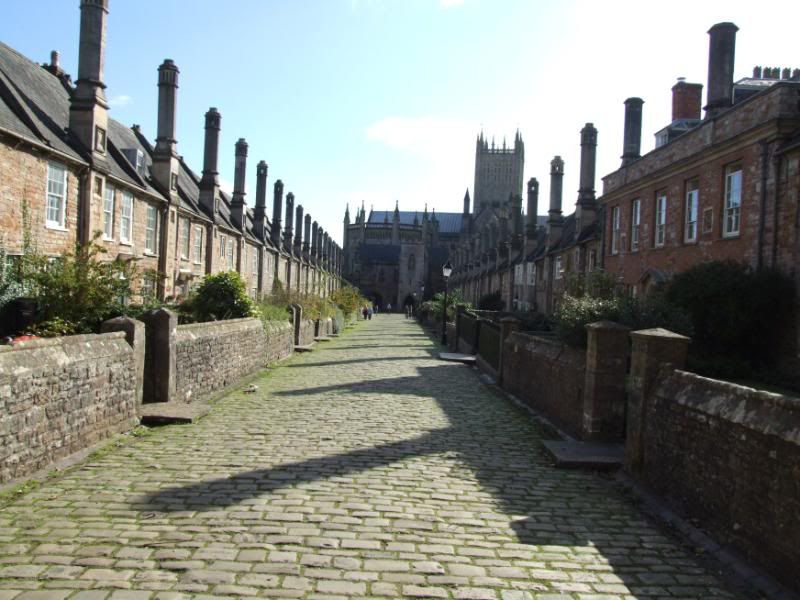
Last two shots of the front
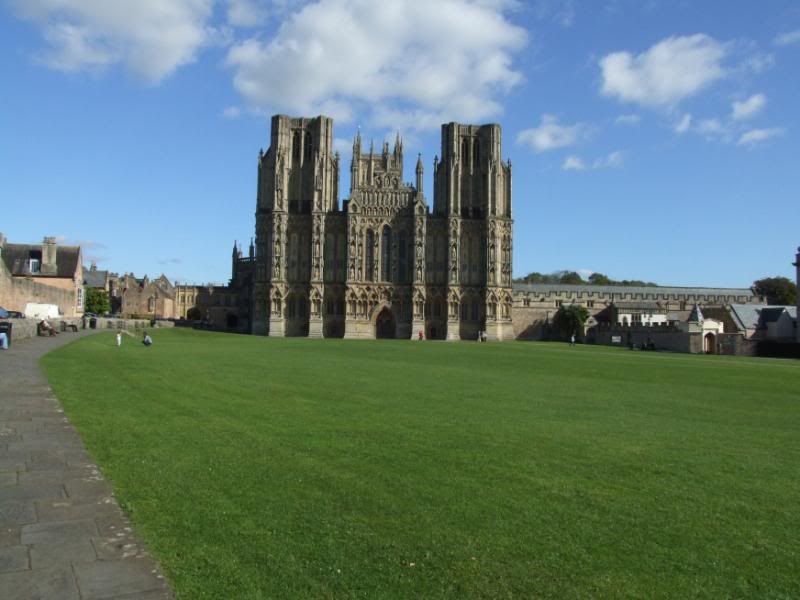
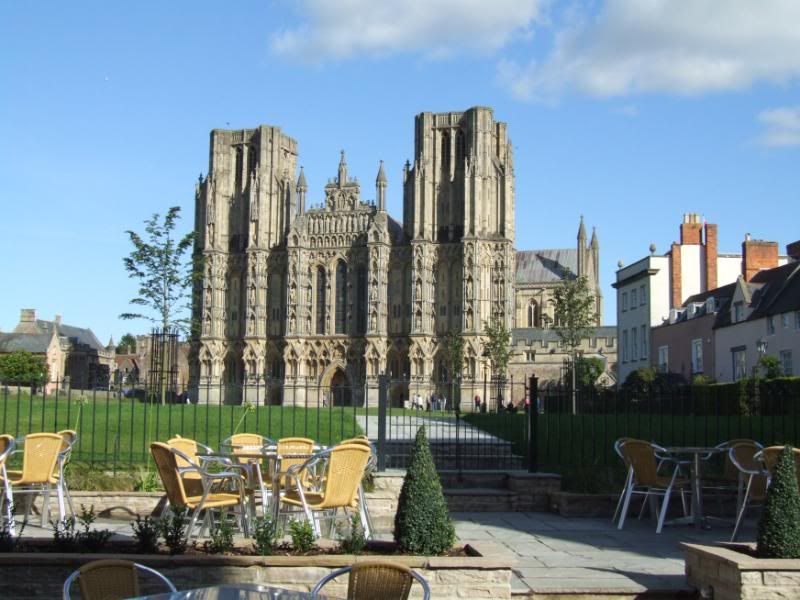
Wells really looks no bigger than a very small town and it has some real treasures to find when you walk around some of the streets. It is famous for its Cathedral and it sure is a very impressive building.
As we were about to go in we saw a notice that stated it was £5.50 each, plus If I wanted to take pictures I had to buy a license that cost £3. £14 in total for what would be a walk around a very large church did seem a bit expensive, but we decided we would pay and go in. Only when you get to the desk you are not asked for any money, I only had to pay £3 for my license to take pictures.
You then enter a corridor and there you find a large tube where you can donate if you want too and yes it says on it they would like £5.50. most we saw just walked past it and put nothing in, but while we did not put the full £11 pound in, we put in a figure that was close to it.
Its really great inside and so big and if you do ever go there its worth waiting for the oldest working clock to do what it does, it’s a great show just on its own.The organ pipes are spectacular and there is so much to read everywhere inside.
But make sure you don’t miss a real gem, we were lucky to find it as we did not know anything about it. Come back outside and walk around the right hand side of the Cathedral, you go under a arch that cars go under and then a few short steps( they will be if you walk beside me) and under another arch into the most wonderful street I have ever seen.
The chimneys stand so high and each has a different crest on them, it was the icing on the cake on our day we went to Wells City
Wells is a small cathedral city and civil parish in the Mendip district of Somerset, England, on the southern edge of the Mendip Hills.
The name Wells derives from the three wells dedicated to Saint Andrew, one in the market place and two within the grounds of the Bishop's Palace and cathedral.During the Middle Ages these wells were thought to have curative powers. The Wells city arms show an ash tree surrounded by three wells, with the Latin motto Hoc fonte derivata copia (the fullness that springs from this well).
Although the population, recorded in the 2001 census, is only 10,406, it has had city status since 1205. This was confirmed and formalised by Queen Elizabeth II by letters patent issued under the Great Seal dated April 1, 1974. It is the second smallest city in England, following the City of London, though St Davids in Wales is the smallest city in the UK.
The City was a Roman settlement but only became an important centre under the Saxons when King Ine of Wessex founded a minster church in 704. Two hundred years later, this became the seat of the local Bishop; but by 1091, this had been removed to Bath. This caused severe arguments between the canons of Wells and the monks of Bath until the bishopric was renamed as the 'Diocese of Bath & Wells', to be elected by both religious houses. Wells became a borough some time before 1160 when Bishop Robert granted its first charter. Fairs were granted to the City before 1160.
Wells was listed in the Domesday Book of 1086 as Welle, from the Old English wiells, which was not listed as a town but included four manors with a population of 132 which implies a population of 500-600. Earlier names for the settlement have been identified which include Fontanetum in a charter of 725 granted by King Ina to Glastonbury, and Fontuculi. Tydeston has also been recorded although this may relate to a hill settlement to the south east of Wells. Tidesput or Tithesput furlang relates to the area east of the Bishops garden in 1245 An established market had been created in Wells by 1136, and it remained under episcopal control until its city charter from Elizabeth I in 1589.
English Civil War
During the English Civil War, Parliamentarian troops used the Cathedral to stable their horses and damaged much of the ornate sculpture by using it for firing practice. William Penn stayed in Wells shortly before leaving for America, spending a night at The Crown Inn. Here he was briefly arrested for addressing a large crowd in the market place, but released on the intervention of the Bishop of Bath & Wells.
Monmouth Rebellion and the Bloody Assizes
During the Monmouth Rebellion the rebel army attacked the Cathedral in an outburst against the Established Church and damaged the West front. Lead from the roof was used to make bullets, windows broken, the organ smashed and their horses stabled in the nave. Wells was the final location of the Bloody Assizes on September 23, 1685. In a makeshift court lasting only one day, over 500 men were tried and the majority sentenced to death.
Main Street


First archway to the Cathedral

The front, this took 30 years to build and the rest took a lot longer



The corridor, you can see the tube for the money on the left.

Shots inside




A strange place we found by going through a door in the main Cathedral

The Carol Shot





Stairs to a special meeting room

The meeting room

Looking back down the stairs

The right hand side

The archway


The wonderful Street



Last two shots of the front


